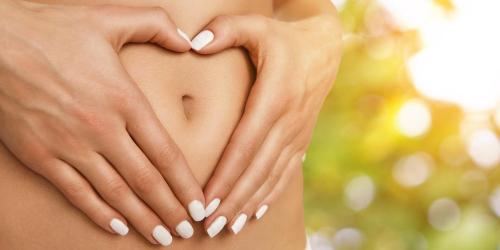In the wake of the detox craze , the hygiene of the colon returns to the front of the stage. Just as one detoxifies one's skin or liver, purifying one's large intestine would be life-saving, though to this day without scientific foundation.
The justification is based on a very ancient theory: auto-intoxication. When the digestive system does not expel all the faeces, debris remains attached to its walls. By stagnating, they enter putrefaction and emit toxins that enter the bloodstream, resulting in allergies , migraines , eczema and other discomforts.
The intestinal enema, a practice that divides
Thus, while the majority of gastroenterologists are opposed, some therapists and wellness centers offer sessions of colon hydrotherapy , sometimes weekly, sometimes in cures.
But an enema can also be done alone at home. "Put 2 liters of warm water, body temperature, in an enema beak and attach it 1.5 m above you, close to the toilet," says Vanessa Lopez, naturopath author of "I introduce me to naturopathy "(Leduc's edition). You can also use a lukewarm infusion of chamomile for its soothing and soothing properties.
"Choose a comfortable position and insert the lubricated cannula into the anus. Open the tap and try to take as much fluid as possible without contracting, breathing slowly and deeply, "says the specialist. In the meantime, massage your belly to help loosen the feces, starting at the bottom right of the abdomen and turning clockwise. As soon as you feel like it, go to the bathroom and evacuate at your own pace without forcing. Allow 20 to 30 minutes for all operations.
At home, essential precautions
Occasional therapeutic enemas are performed in the hospital in case of anal incontinence, major constipation to avoid occlusion and to clear the colon before a radiological examination or surgery.
In home-made version, you have to be careful. Do not use water that is too hot or too cold so as not to attack the mucosa. Ban the tap water: it is better to opt for mineral or filtered water. And to facilitate the purge, do not load your intestine the day before: only absorb liquid foods (juice, soups) 24 hours ago. And above all, do not repeat the act on a daily basis! In case of distal constipation, it is not necessary to carry out a complete enema. A small suppository of glycerin is usually enough to solve the problem. On the other hand, if the state persists, it is absolutely necessary to consult.
Note: "the enema is not recommended for pregnant women, people with hemorrhoids, having been operated on the digestive system for less than a year or in case of intestinal bleeding," says Vanessa Lopez. Patients with diverticula, Crohn's disease , ulcerative colitis or digestive tumors should also avoid.
Irrigation of the colon: side effects not to neglect
An American study from the Georgetown School of Medicine pointed to the many unwanted side effects of enemas. If infections seem extremely rare, the likelihood of nausea , vomiting and diarrhea is important.
Worse: the escape of minerals is favored, which can generate a dramatic dehydration in case of heart or kidney fragility. Many gastroenterologists also question the risk of inflammation or perforation of the intestines . Not to mention the possible damage to the intestinal flora. Too diluted, the latter may become lighter and bare the lining of the colon. As a result, the toxins are more absorbed by the intestinal wall. Exactly the opposite of the desired effect!
Caution is therefore required.




